|
Brought to you by Dairy's Professional Development Organization®
|
|
Opportunities to learn...
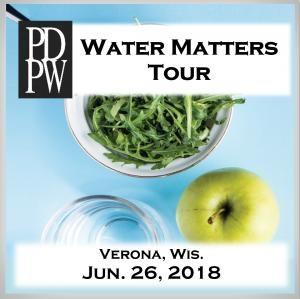 WATER QUALITY TOUR SET FOR JUNE 26.
PDPW is teaming up with UW Discovery Farms® again to showcase water-quality innovations and practices during a multiple-stop tour Tuesday, June 26, near Verona, Wis.
Tour stops include Sunburst Dairy, a 500-cow dairy owned and operated by Brian, Yogi and Cory Brown. As president of the Farmers for the Upper Sugar River farmer-led watershed group, Brian will highlight the work of the group in regards to protecting and enhancing water quality. Over lunch and on the banks of the Sugar River, Wade Moder, Executive Director of the Upper Sugar River Watershed Association, will share work the association is doing with farmers. He'll also review their management of invasive aquatic life. WATER QUALITY TOUR SET FOR JUNE 26.
PDPW is teaming up with UW Discovery Farms® again to showcase water-quality innovations and practices during a multiple-stop tour Tuesday, June 26, near Verona, Wis.
Tour stops include Sunburst Dairy, a 500-cow dairy owned and operated by Brian, Yogi and Cory Brown. As president of the Farmers for the Upper Sugar River farmer-led watershed group, Brian will highlight the work of the group in regards to protecting and enhancing water quality. Over lunch and on the banks of the Sugar River, Wade Moder, Executive Director of the Upper Sugar River Watershed Association, will share work the association is doing with farmers. He'll also review their management of invasive aquatic life.
At the City of Verona Public Works, Assistant Director Marty Cieslik will discuss how Verona's explosive population growth and increased business demands have impacted storm-water management and infrastructure construction and inspection. The tour concludes with a stop at the Wisconsin Brewing Company to showcase the role water plays in the brewing business, including management of wastewater streams.
A chartered bus will pick up at Verona Park and Ride at 9:30 am and return at 3:30pm. For more information and to register click here or call 800-947-7379.
Up to 4.5 credits of continuing education units are available for this program through Dairy AdvanCE.
 SAVE THE DATE FOR JULY 17 DAIRY TOURS to Son-Bow Farms, Inc. in Spring Valley and Alfalawn Farm in Menomonie, Wis. Join in a round-table discussion with producers and consultants to hone in on critical factors that add up to successful dairy farming. Attendees will hear from Jay Richardson at Son-Bow regarding nutrient management efficiencies and they'll also tour Alfalawn Farm to see the steps they've taken to ensure their facilities are transition-ready. Lunch will be included. Stay tuned for more details on this mid-summer look of two successful dairy operations. SAVE THE DATE FOR JULY 17 DAIRY TOURS to Son-Bow Farms, Inc. in Spring Valley and Alfalawn Farm in Menomonie, Wis. Join in a round-table discussion with producers and consultants to hone in on critical factors that add up to successful dairy farming. Attendees will hear from Jay Richardson at Son-Bow regarding nutrient management efficiencies and they'll also tour Alfalawn Farm to see the steps they've taken to ensure their facilities are transition-ready. Lunch will be included. Stay tuned for more details on this mid-summer look of two successful dairy operations.

HOT-TOPIC WEBINARS JUST A CLICK AWAY with the PDPW World Class Webinars Library. The full library features five years worth of best-in-class webinars presented by the dairy industry's leading experts in animal care, economics, human resources and many other topics. All are available to purchase for your own viewing or to use as a teaching tool with your team. Click
here
to browse the library or purchase access.
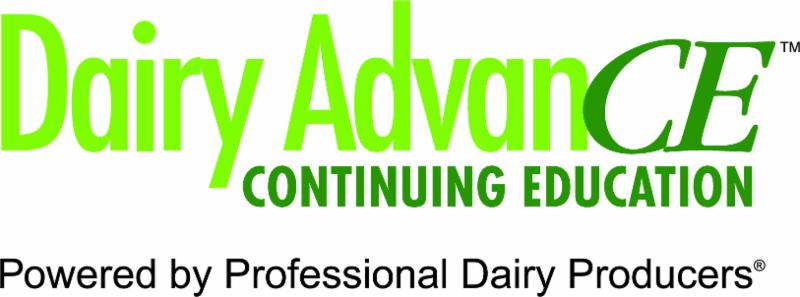
CHECK OUT DAIRY ADVANCE
- Find, track and report your Continuing Education (CEs). Get more details by clicking
here
.
|
For your dairy...
 HOW NUTRITION CAN IMPACT DAIRY COW FERTILITY was the focus of a meta-analysis researchers completed and published in Journal of Dairy Science. The study reviewed 39 experiments representing 118 treatments that measured the impact of diet during early lactation on the calving-to-pregnancy interval. Researchers found nutritional management around calving influences reproductive success. The findings support the importance of dietary fats as well as increased energy and protein balances in early lactation for improved fertility outcomes and suggest starch and sugars may have different effects on the proportion of cows that are pregnant to AI. The authors noted there is a need for more field studies exploring the roles of specific fatty acids, amino acids, phosphorus, and carbohydrates on reproduction. Learn more here. HOW NUTRITION CAN IMPACT DAIRY COW FERTILITY was the focus of a meta-analysis researchers completed and published in Journal of Dairy Science. The study reviewed 39 experiments representing 118 treatments that measured the impact of diet during early lactation on the calving-to-pregnancy interval. Researchers found nutritional management around calving influences reproductive success. The findings support the importance of dietary fats as well as increased energy and protein balances in early lactation for improved fertility outcomes and suggest starch and sugars may have different effects on the proportion of cows that are pregnant to AI. The authors noted there is a need for more field studies exploring the roles of specific fatty acids, amino acids, phosphorus, and carbohydrates on reproduction. Learn more here.
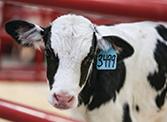 FORMULATION OF CALF STARTER AND AMOUNT OF MILK REPLACER influences the performance and digestion of dairy calves postweaning, according to research published in Journal of Dairy Science. The study compared performance of male Holstein calves starting at 2-3 days old through 56 days old on programs with medium and high levels of milk replacer. Calves were also fed pelleted, low-starch or texturized high-starch calf starters. Researchers found calves fed higher levels of milk replacer gained more body weight (but not hip width) and were more efficient to weaning compared with calves fed medium levels, although fecal scores and days treated with medications were greater. Digestibility of nutrients was affected by type of calf starter and changed from five weeks to eight weeks when calves received solely calf starter. Learn more here. FORMULATION OF CALF STARTER AND AMOUNT OF MILK REPLACER influences the performance and digestion of dairy calves postweaning, according to research published in Journal of Dairy Science. The study compared performance of male Holstein calves starting at 2-3 days old through 56 days old on programs with medium and high levels of milk replacer. Calves were also fed pelleted, low-starch or texturized high-starch calf starters. Researchers found calves fed higher levels of milk replacer gained more body weight (but not hip width) and were more efficient to weaning compared with calves fed medium levels, although fecal scores and days treated with medications were greater. Digestibility of nutrients was affected by type of calf starter and changed from five weeks to eight weeks when calves received solely calf starter. Learn more here.
 OPTIONS FOR TREATING DIGITAL DERMATITIS WERE COMPARED in a research study published in Journal of Dairy Science. Current digital dermatitis treatment typically involves routine hoof trimming and topical antibiotics, and the study examined effectiveness of several non-antibiotic commercial topical products as well as cleaning feet in the milking parlor. Hind feet of lactating cattle on ten farms were examined weekly, measuring clinical cure of lesions after one week and probability of recurrence of active lesions after seven weeks. These results provide alternatives to antibiotics for treatment of digital dermatitis lesions and highlight the potential importance of cleaning feet in the milking parlor. Read more here. OPTIONS FOR TREATING DIGITAL DERMATITIS WERE COMPARED in a research study published in Journal of Dairy Science. Current digital dermatitis treatment typically involves routine hoof trimming and topical antibiotics, and the study examined effectiveness of several non-antibiotic commercial topical products as well as cleaning feet in the milking parlor. Hind feet of lactating cattle on ten farms were examined weekly, measuring clinical cure of lesions after one week and probability of recurrence of active lesions after seven weeks. These results provide alternatives to antibiotics for treatment of digital dermatitis lesions and highlight the potential importance of cleaning feet in the milking parlor. Read more here.
|
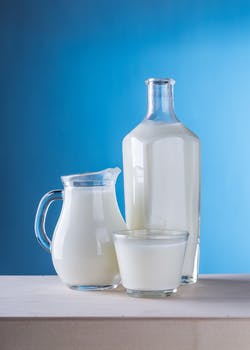 CONSUMERS PREFER TASTE OF REAL DAIRY
though a recent study from Cargill shows an increasing number of people are consuming real dairy products in combination with dairy alternatives. Fortunately, the research shows
63% of respondents prefer the taste of real dairy and nearly half (47%) of respondents consider dairy alternatives too expensive. The top reasons for avoiding dairy products were reported as lactose intolerance (35%), dairy sensitivity and/or allergy (26%), avoiding added growth hormones (24%) and reducing saturated fat consumption (24%). Only 7% of respondents said they avoid dairy because they don't like its taste and just over 20% said they have never tried dairy alternatives.
Read the full article featured in Supermarket News
here
. CONSUMERS PREFER TASTE OF REAL DAIRY
though a recent study from Cargill shows an increasing number of people are consuming real dairy products in combination with dairy alternatives. Fortunately, the research shows
63% of respondents prefer the taste of real dairy and nearly half (47%) of respondents consider dairy alternatives too expensive. The top reasons for avoiding dairy products were reported as lactose intolerance (35%), dairy sensitivity and/or allergy (26%), avoiding added growth hormones (24%) and reducing saturated fat consumption (24%). Only 7% of respondents said they avoid dairy because they don't like its taste and just over 20% said they have never tried dairy alternatives.
Read the full article featured in Supermarket News
here
.
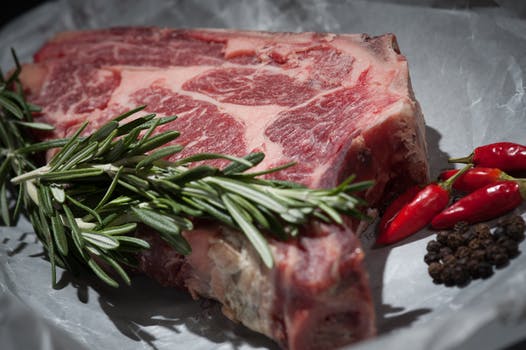 SHARING INFORMATION ABOUT MEAT PREPARATION can enhance consumers' experiences and encourage sales of meat and poultry, according to the Food Marketing Institute's 13th annual study of consumers' meat planning and shopping habits. The research found 53% of consumers said their knowledge of meat/poultry preparation is at a basic level or lower. Consumers are increasingly satisfied with the amount of nutritional information, with 79% of shoppers reporting sufficient information available to make educated decisions on the healthfulness of various meat and poultry cuts; this is up from 69% in 2016. Shoppers also are showing greater interest in convenience and online purchasing, with 18% of respondents saying they've purchased meat online in 2018, up from four percent in 2015. Read the full results here. SHARING INFORMATION ABOUT MEAT PREPARATION can enhance consumers' experiences and encourage sales of meat and poultry, according to the Food Marketing Institute's 13th annual study of consumers' meat planning and shopping habits. The research found 53% of consumers said their knowledge of meat/poultry preparation is at a basic level or lower. Consumers are increasingly satisfied with the amount of nutritional information, with 79% of shoppers reporting sufficient information available to make educated decisions on the healthfulness of various meat and poultry cuts; this is up from 69% in 2016. Shoppers also are showing greater interest in convenience and online purchasing, with 18% of respondents saying they've purchased meat online in 2018, up from four percent in 2015. Read the full results here.
 IMPERFECT PRODUCE, PULP FIBER AND LEFTOVER GRAIN from brewing beer are all examples of ingredients start-up companies are using to develop new food products to help keep food waste out of landfills. These new food and beverage businesses are using food ingredients that would otherwise be discarded to make new products, including snack bars from grain left over from the brewing process, making juice from fruit too unattractive to sell in stores and making snack chips from pulp fiber leftover from cold-pressed juices. These companies are working to reduce the $218 billion spent annually in the US on food that ends up wasted. Learn more and see some of the products being developed from food waste here
. IMPERFECT PRODUCE, PULP FIBER AND LEFTOVER GRAIN from brewing beer are all examples of ingredients start-up companies are using to develop new food products to help keep food waste out of landfills. These new food and beverage businesses are using food ingredients that would otherwise be discarded to make new products, including snack bars from grain left over from the brewing process, making juice from fruit too unattractive to sell in stores and making snack chips from pulp fiber leftover from cold-pressed juices. These companies are working to reduce the $218 billion spent annually in the US on food that ends up wasted. Learn more and see some of the products being developed from food waste here
.
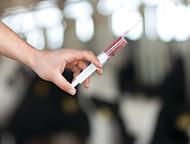 WEIGHING COSTS AND BENEFITS OF ELIMINATING ANTIBIOTICS in dairy production was the focus of a study conducted by Cornell University. For the "Farm Cost of Decreasing Antimicrobial Use in Dairy Products" study, researchers modeled a dairy herd of 1,000 cows and factored in an average level of the nine most frequent bacterial diseases of dairy cows found in western countries. In addition to calculating net costs to prohibit antimicrobial use, researchers studied scenarios with different treatment prices and milk-withdrawal periods. The study showed an average cost of about $61 per dairy cow. They are currently working on models to analyze pork, poultry and beef production. Read the journal article here and a summary of the research in Feedstuffs magazine here. WEIGHING COSTS AND BENEFITS OF ELIMINATING ANTIBIOTICS in dairy production was the focus of a study conducted by Cornell University. For the "Farm Cost of Decreasing Antimicrobial Use in Dairy Products" study, researchers modeled a dairy herd of 1,000 cows and factored in an average level of the nine most frequent bacterial diseases of dairy cows found in western countries. In addition to calculating net costs to prohibit antimicrobial use, researchers studied scenarios with different treatment prices and milk-withdrawal periods. The study showed an average cost of about $61 per dairy cow. They are currently working on models to analyze pork, poultry and beef production. Read the journal article here and a summary of the research in Feedstuffs magazine here.
|
For your business mind...
MAKE SMART DECISIONS WHEN EVALUATING HERD HEALTH EXPENSES.
Herd health expenses are one area where dairy producers seek to reduce unnecessary expenses, but the consequences of a bad decision could have long-lasting effects. Dr. Robert Lynch from Cornell offers a list of dos and don'ts when evaluating your herd health program: 
- Do review your treatment protocols to make sure they align with efficacy standards.
- Don't decrease the dose or duration of therapy from the agreed upon protocols without your veterinarian's approval.
- Do eliminate steps in your vaccine protocol that lack sound disease-prevention data.
- Don't eliminate vaccination steps that lead to lowered herd protection from known disease threats unless you can absorb the cost of a disease outbreak.
- Do critically evaluate replacement animal inputs to ensure they are contributing to heifer performance.
- Don't make cuts in your heifer-raising program that delay their entry into the milking herd or decrease their performance as adults.
Read the full article
here
.
 MORE THAN MONEY IS IMPORTANT when providing motivation for employees. While most compensation and recognition programs are driven by financial compensation, it is important to remember that many employee behaviors are driven by other factors. What can you do to encourage your team members to stay engaged and motivated at work? Research has shown companies can improve employee productivity, engagement and retention when they also consider motivators outside monetary compensation, including a person's innate drive to acquire, bond, innovate and defend. Read this article
to learn more and find tips on providing compensation and recognition to employees. MORE THAN MONEY IS IMPORTANT when providing motivation for employees. While most compensation and recognition programs are driven by financial compensation, it is important to remember that many employee behaviors are driven by other factors. What can you do to encourage your team members to stay engaged and motivated at work? Research has shown companies can improve employee productivity, engagement and retention when they also consider motivators outside monetary compensation, including a person's innate drive to acquire, bond, innovate and defend. Read this article
to learn more and find tips on providing compensation and recognition to employees.
|
"Progress always involves risk; you can't steal second base and keep your foot on first."
--- Frederick Wilcox
|
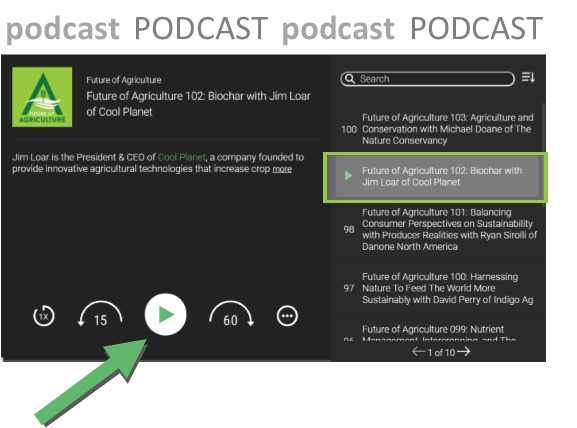 In addition to featuring books to spark new ideas for your operation, we will also begin to share podcasts featuring pertinent business and management topics. Listen at your computer or on your phone - or download to listen at a later time. In addition to featuring books to spark new ideas for your operation, we will also begin to share podcasts featuring pertinent business and management topics. Listen at your computer or on your phone - or download to listen at a later time.
PODCAST REVIEW - IN "FUTURE OF AGRICULTURE 102: BIOCHAR
" host Tim Hammerich interviews
Jim Loar, President and CEO of Cool Planet, a company providing innovative agricultural technologies to increase crop production at a low cost while reducing greenhouse gases. The company's current research focus is on their Cool Terra engineered Biocarbon technology, a soil enhancer that improves soil health, reduces water consumption and optimizes fertilizer performance.
In this episode, Jim shares their company's latest findings on how Cool Terra can optimize crop output. He describes the science behind the product and its benefits for both soil and farmer. He also explains some of its most relevant research findings, particularly regarding soil-microbe health.
To play or download the 40-minute podcast, click
here
, then scroll down to select "Future of Agriculture 102: Biochar with Jim Loar of Cool Planet". Click the triangular "play" icon to begin listening.
|
|
A BIG Thank You...
TO THE PDPW SPONSORS who are supporting your professional development organization! As a producer-led group,we extend a heart-felt "Thank You!" to those that stand alongside our nation's dairy farmers. T
heir support allows PDPW to execute best-in-class producer training and has enabled us to become the go-to resource for unified outreach initiatives. If you or a company you know is interested in participating as a sponsor, please contact us at abonomie@pdpw.org or call 800-947-7379.
See the full list of generous sponsors
here.
|
|
PDPW Education Calendar
| June 26 |
Water Quality Tour: Verona, Wis.
|
| July 17 |
Farm Tour: Northwestern Wis. |
| Jan. 15-17, 2019 |
2019 PDPW Managers Academy for Dairy Professionals: South Carolina
|
| Mar. 13-14, 2019 |
2019 PDPW Business Conference: Madison, Wis.
|
STAY CONNECTED
800-947-7379
|
|
|
|
|